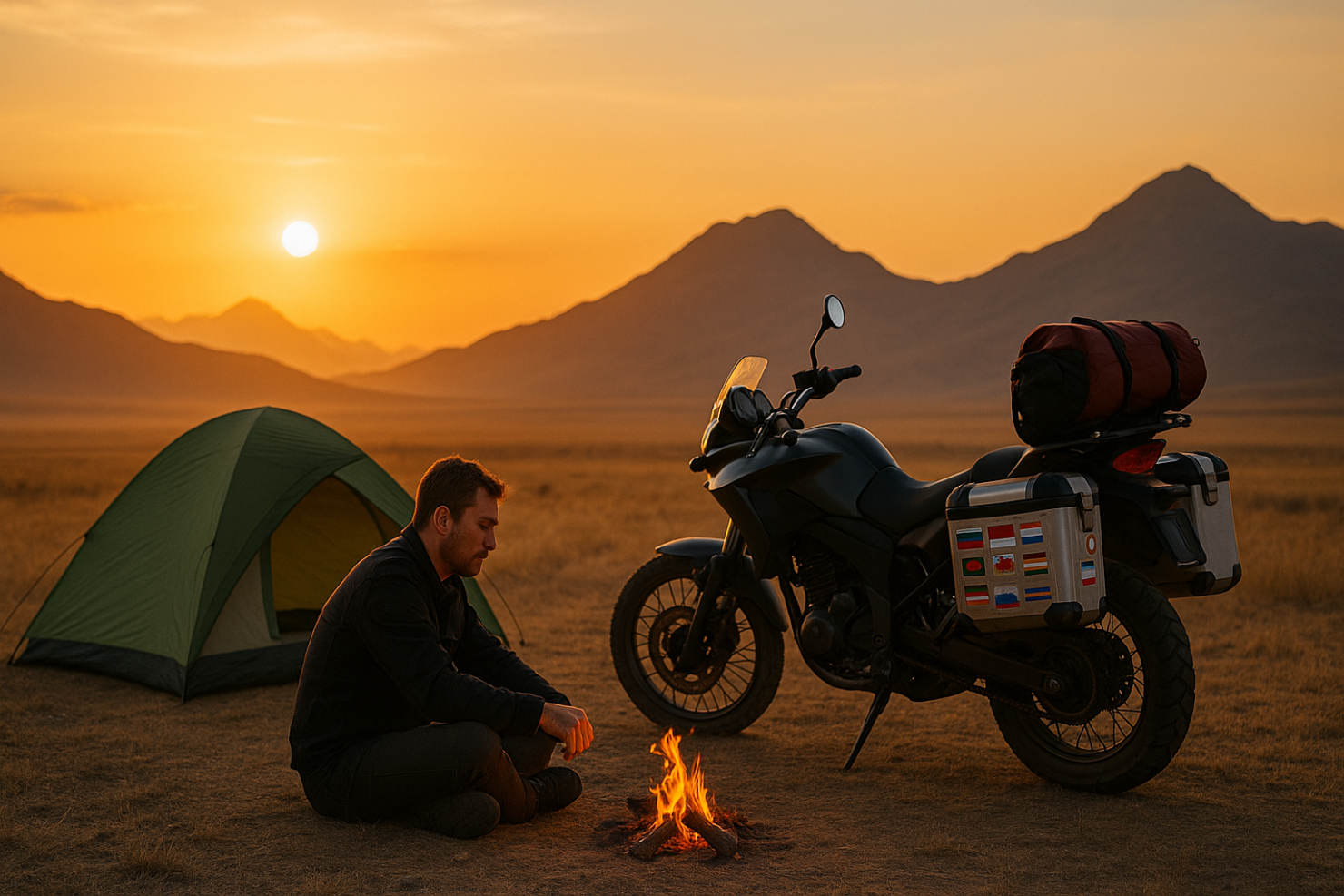Já todos tivemos a tentação de pegar na mota, ligar o GPS e seguir para o desconhecido. E, embora tenha tido a sua magia, também me deu algumas dores de cabeça. Uma boa viagem não é só seguir o mapa, é criar a tua própria aventura.
Diz-se que uma grande viagem é vivida 3 vezes, o planeamento, a viagem em si e depois de chegar ver ou partilhar histórias, fotos e vídeos que fizemos no caminho.
O planeamento da rota antes de meteres chave na mota é o segredo para evitar contratempos e garantir que desfrutas de cada quilómetro. Vamos partilhar um processo de planeamento, passo a passo.
1. The Paper Map: Where It All Begins
Antes de ligares qualquer ecrã, pega num bom mapa. Eu adoro um bom mapa de papel, especialmente para ter a visão geral.
-
- Plot the Route: Trace your route with a marker. You’ll quickly see the route, the countries you’ll pass through, and most importantly, the areas you can avoid.
With this, you’ll understand where you can shorten the journey if needed. - Stop Points: Mark the places where you want to spend the night. This will give you an idea of how many kilometers you need to cover each day to reach your goal.
- The Route: The paper map will show you the main roads, but also the secondary ones. And as you know, the best views are rarely found on highways.
-
- Planning Platforms: Use sites like Google Maps or ViaMichelin to check the distance, cost, and travel time. But for a bike, it’s best to use platforms that let you choose more winding and scenic routes, not just the fastest ones.
- Points of Interest: Add points of interest to your route. Don’t just stick to hotels and restaurants; add viewpoints, landscapes, historical sites, and even that little tavern you saw in a YouTube video.
- Service Stations: Knowing your bike’s range, mark the gas stations along your route. This is a golden tip, especially in more remote areas where gas stations can be scarce. Don’t forget to check their opening hours; they might be closed on weekends or at night, for example.
- Comfort: Don’t forget how many kilometers are comfortable for you to ride each day. Enjoy the trip, account for stop times at each point of interest, meals, and refueling. We’re on a journey, not in a race that forces us to ride xx kilometers a day.
-
- Alternative Route: Plan an alternative route in case of bad weather, road closures, or accidents. Having a plan B will save you the stress of finding a new path halfway through the trip.
- Emergency Contacts: Note down the emergency numbers for each country you pass through.
- Insurance: Check if your bike’s insurance covers the countries you’ll be riding in, if you have travel assistance for those kilometers, and look for travel insurance that covers unexpected events.
The Motorcyclist’s Verdict
Uma viagem de mota é feita de liberdade e de aventura. O planeamento da rota não é para te tirar essa liberdade, mas sim para te dar a tranquilidade de desfrutares de cada momento.
A mota é a liberdade, mas o mapa é a tua bússola.
E tu, como preparas as tuas rotas? Partilha as tuas dicas nos comentários.
Boas curvas!
3. The Contingency Route: Plan B
Por mais bem planeada que a tua viagem seja, os imprevistos acontecem. Por isso, um bom motociclista tem sempre um plano B.
2. Route Details: Technology is Your Friend
Com o esboço feito, é hora de passar a rota para o teu GPS ou aplicação.
- Plot the Route: Trace your route with a marker. You’ll quickly see the route, the countries you’ll pass through, and most importantly, the areas you can avoid.





